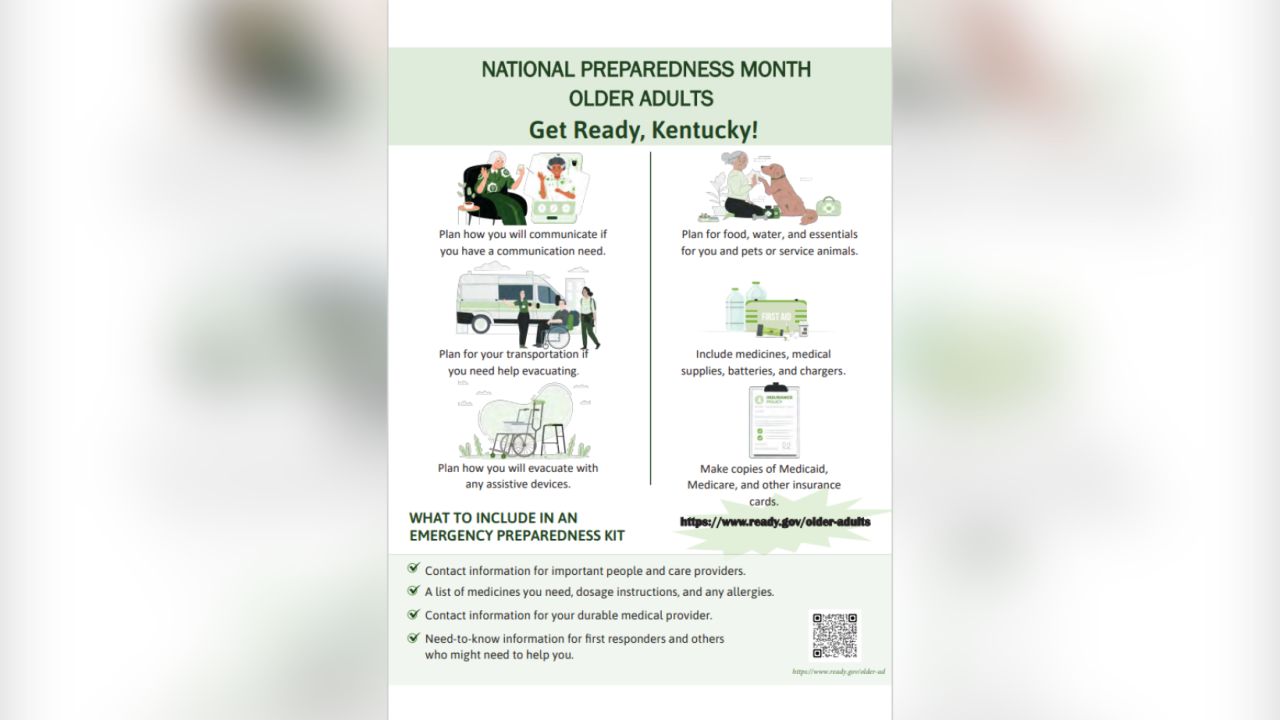FRANKFORT, Ky. (LEX 18) — September marks the annual recognition set to remind everyone in America how important it is to prepare for disasters and emergencies that can happen at any time.
There have been 12 disaster declarations in Kentucky since 2019, including severe flooding, tornados, ice storms, and high winds. Dozens of people have died.
The people in charge of ensuring the state is prepared now emphasize the dire importance of planning.
Jeremy Slinker, Director of Kentucky Emergency Management (KYEM), says they are always in the planning and preparing phase.
"It's what you do pre-disaster or pre-emergency. So, it's all the same, whether it's personal or whether it's us, like the government or somebody in the response community. How can we be more resilient and take some of these powerful emergencies and disasters we have and recover faster or have less of an impact than they normally would," said Slinker.
Every year, Kentucky has had at least one weather-related disaster. This year, two major disasters have been declared in the state due to severe storms, straight-line winds, flooding, landslides, mudslides, and tornadoes.
Most occur during spring and early summer. Slinker says flooding and high wind events have become the most common.
"We're seeing a lot of these rains come in, ten-plus inches over a 24-hour period, which you almost never see. That's what caused the big flooding in Eastern Kentucky as well. And tornadoes have always been something we've warned on and prepared for and asked people to have those safe places to go," said Slinker.
Slinker says the disasters are becoming more regular.
"The reality is we're just having more disasters and more intense disasters with bigger impacts," said Slinker.
It's why this month, KYEM and FEMA will be spending the month reaching out to Kentucky disaster survivors and advocating for disaster preparedness,
"We lean on the safe side," said Slinker. "I'm always lean on to overdo it, then underdo it."
Some improvements or lessons learned over the past years have made recovery faster.
- Improved interagency communication through monthly conversation
- Opening the emergency operation center sooner
- Case managers on scene faster
However, other processes, like mitigation projects, still need to be faster and more complex.
According to FEMA data, Kentucky had more flood-related disaster declarations than any other state between 2000 and 2022, yet those mitigation projects have yet to keep up with the need.
After every declared disaster, FEMA includes funding for states to use for mitigation projects. Planning projects and applying for funding are left up to individual counties.
Some counties are still trying to recover from the last disaster.
But it's up to KYEM's hazard mitigation council to decide how the money is dispersed.
"If you're impacted by one of these storms, nothing is fast enough, and the process that I have learned about is significant," said Slinker.
He said FEMA Administrator Deanne Criswell has visited his office to discuss improvements.
"We sat right in this building, talked about the complexity of the processes, challenges our communities are facing, and you know, and she's committed to kind of going out and reducing the complexity," said Slinker.
Slinker says KYEM is also rewriting Kentucky's hazard mitigation plan from 2018. A lot has changed since then.
"If we're seeing more floods, that plan will address more floods. If we see more high wind events, we're going to address more wind events and power outages and things like that. So, there's no lack of planning or focus on things," he said.
FEMA says in Kentucky, older adults can face more significant risks when it comes to extreme weather events and emergencies.
Over 25% of the applicants who apply for FEMA disaster assistance are over 65, and many live in rural areas.
They'll be focusing on that population this month.
In previous years, they focused on African Americans and the Latinx community.
FEMA's Tips:
This year's theme, "Take Control in 1, 2, 3," encourages everyone, especially older adults, to become more prepared in three simple steps:
1. Assess your needs. Everyone has unique needs. Several factors can affect the steps you must take to prepare yourself and those you care for. Whether you care for pets, have children, have a medical condition, or have a disability, knowing what your family will need to stay safe is essential.
2. Make a plan. Once you've assessed your needs, you can plan for what you'd do, where you'd go, and what to bring if a disaster strikes. Your emergency supply kit should include items that meet your needs.
3. Engage your support network. Please get to know your neighbors because they, along with your family and friends, can be a support network before, during, and after a disaster by providing emotional and practical support.
English: https://www.ready.gov/older-adults
Spanish: https://www.ready.gov/es/adultos-mayores
They've created a postcard/flyer that organizations, individuals, and those who care for older adults or people with disabilities can distribute to their audiences. To request a copy to download, email FEMA-Kentucky-Outreach@fema.dhs.gov.






